Top 10 Blue Perennials for Dreamy Gardens
Some colors can be found in abundance in the landscape, but blue often isn’t one of them. Yet gardeners tell us it is one of their most favorite colors, so we’re always seeking out reliable perennials that are worthy of the Proven Winners name. Here are ten we think are definitely worth finding a place for in your landscape.
Clusters of periwinkle blue, star-shaped flowers top this easy to grow, native perennial cultivar every year in late spring to early summer. As an added bonus, this particular variety emerges from the ground in spring with stormy purplish black stems. Its taller, bushy habit makes it ideal for filling space in the middle of the border where it will need little more than sunshine and occasional water during dry spells to flourish. Hardy in zones 4-9, full sun to part shade, 2-2 ½’ tall, deer resistant Learn more: Amsonia Growing Guide |
If you battle deer or rabbits in your garden but want to grow flowers that feed pollinators, plant salvia. They won’t find its fuzzy, fragrant foliage so tasty, but bees, butterflies and hummingbirds will adore its blossoms. Color Spires salvias are particularly prolific, blooming heavily in late spring and reblooming sporadically through the growing season. If icy blue fits your color scheme best, choose ‘Crystal Blue’. For something a little darker, try ‘Azure Snow’ which bears bicolor violet blue and pure white blossoms. Hardy in zones 3-9, full sun, 18-20” tall, deer and rabbit resistant |
One of the most durable, long-lived perennials for the landscape is Baptisia, commonly known as false indigo. Its existence has been noted since ancient times and today’s cultivars are simply magnificent. Decadence varieties are perfectly sized for urban gardens, reaching 2 ½ to 3’ tall (half the size of some native species) and filling out beautifully as they mature. ‘Blueberry Sundae’ produces long spikes of vibrant blue flowers that feed bees and butterflies in late spring to early summer. Hardy in zones 4-9, full sun to light shade, 2 ½-3’ tall, deer resistant |
Most people think of clematis as a climbing vine, but it also comes in an upright clumping form that fits easily into most gardens. ‘Stand by Me’ will grow like any other upright perennial in your landscape. Its stems knit together to support themselves as they grow, and it may lean on its neighbors a bit for a little extra propping up. Pollinating bees and butterflies adore its bright blue, bell-shaped flowers from late spring to early summer. Expect to see some sporadic rebloom in late summer. Hardy in zones 3-7, full sun to part shade, 3’ tall |
This award-winning vining clematis is super easy to grow and blooms reliably every year on both old and new wood. Its first round of large, pale blue flowers appears in late spring on last year’s growth. Bees and hummingbirds are attracted to the deep red stamens in the center of each blossom. Additional flowers appear on the new growth as the plant matures through the growing season. Try growing ‘Still Waters’ up through an airy, dark foliage shrub like Black Lace® elderberry or up a trellis on a dark wall for maximum effect. Hardy in zones 5-9, full sun to part shade, 4-7’ tall |
This award-winning vining clematis is named after world-renowned clematis breeder Brother Stefan Franczak of Warsaw, Poland, so you know it must be pretty amazing. It’s one of the bluest clematis we’ve seen, and it blooms like crazy for months. Large, ruffled blossoms appear on both old and new wood from early summer to late summer. A smaller, refined habit makes this variety ideal for growing up smaller trellises and low fences. Hardy in zones 4-9, full sun to part shade, 5-7’ tall |
You might say this one is a little more purple than blue, but we couldn’t pass up a chance to tell you about one of the very best perennials in our lineup. This improved cultivar forms a denser, more upright clump that won’t flop open and its flower power is extraordinary. Its fragrant foliage keeps deer away, but pollinating bees and hummingbirds will always find this plant when it’s in bloom. Plant Russian sage where the sun shines all day, and in well-drained soil where the sprinkler doesn’t reach for best results. Hardy in zones 4-9, full sun, 28-32” tall, deer resistant |
Lavender offers many of the same benefits as Russian sage—sun and drought tolerance, deer resistance, and attractiveness to pollinators. They both thrive on neglect and are perfect for busy gardeners who have little time to be fussing over their plants. Their fragrance is notably different: sage has a strong herbal scent, while lavender smells more like perfume. There are plenty of rich violet blue flowers to harvest from Sweet Romance all season long. Use them in bouquets, baked goods, homemade air fresheners and mixed with essential oils for diffusing. Hardy in zones 5-9, full sun, 12-18” tall, deer and rabbit resistant |
Like a patch of violet blue paintbrushes standing ready to color your garden, this ahh-mazing new spike speedwell is incredibly floriferous. Its flowers appear for many weeks beginning in early summer, attracting pollinating bees, butterflies and hummingbirds to the garden. The healthy, dark green foliage forms a low mound that stays in place and won’t spread around the garden. Even gardeners facing deer pressure can grow this perennial. Don’t miss it! Hardy in zones 4-8, full sun to light shade, 14-16” tall, deer resistant |
With the new addition of ‘Diamond Lake’, we now have two outstanding blue hostas in the Proven Winners lineup. First came ‘Waterslide’, a remarkably distinctive, medium-sized, light silvery blue hosta with long, somewhat narrow, rippled leaves. The new ‘Diamond Lake’ is a larger variety with broad heart-shaped, heavily corrugated leaves and light ocean blue coloring. Both varieties have excellent foliage substance which makes them less attractive to garden pests. |
Want to see more blue plants?
- 46 Blue Plants
- Here are all the blue flowering plants in our lineup.
- Read about our Top 10 Blue Shrubs here and about our Top 10 Blue Annuals here.
- Check out these blue flowering plants on Pinterest.
Looking for other colors?
Patent Info: Color Spires® 'Crystal Blue' Salvia nemorosa USPP26344 CanPBR5338; Color Spires® 'Azure Snow' Salvia USPPAF CanPBRAF; Decadence® 'Blueberry Sundae' Baptisia USPP23891 CanPBR5095; 'Stand by Me' Clematis USPPAF CanPBRAF; Still Waters™ Clematis USPP20372; Brother Stefan® Clematis USPP27664 CanPBRAF; 'Denim 'n Lace' Perovskia atriplicifolia USPP28445 Can5568; Sweet Romance® Lavandula angustifolia USPP23001 CanPBR4906; Magic Show® 'Wizard of Ahhs' Veronica USPPAF CanPBRAF; Shadowland® Diamond Lake Hosta USPPAF CanPBRAF; Shadowland® 'Waterslide' Hosta USPPAF CanPBRAF



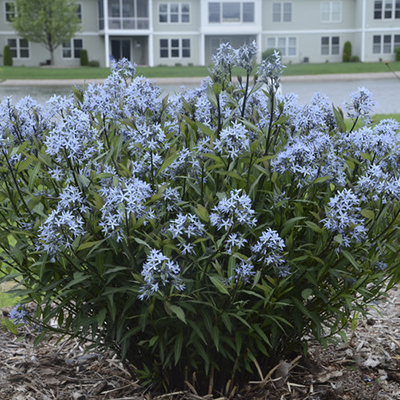 1.
1. 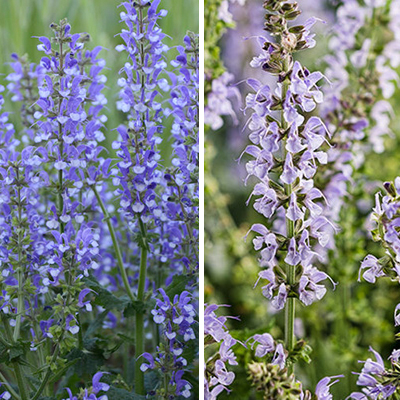 2.
2. 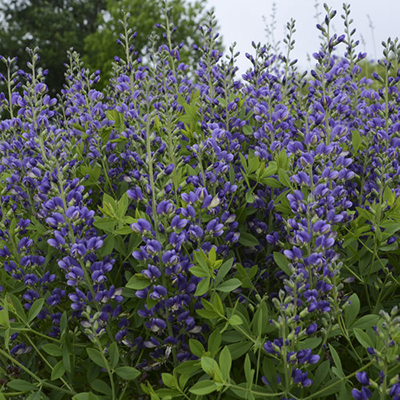 3.
3.  4.
4. 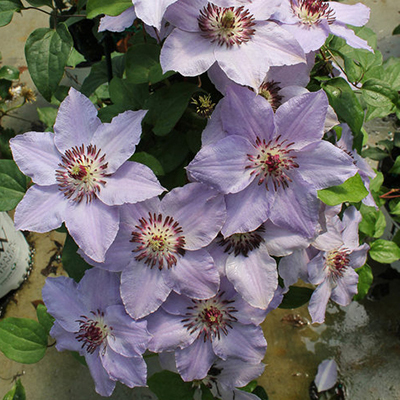 5.
5. 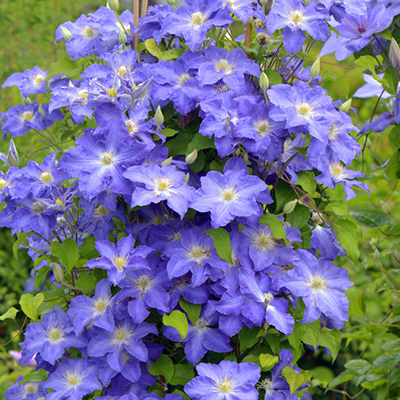 6.
6. 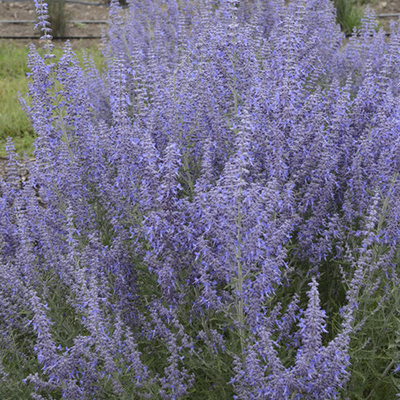 7.
7. 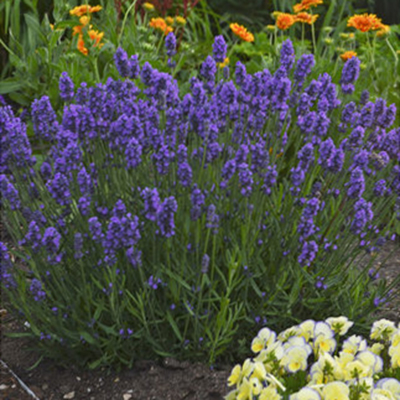 8.
8.  9.
9. 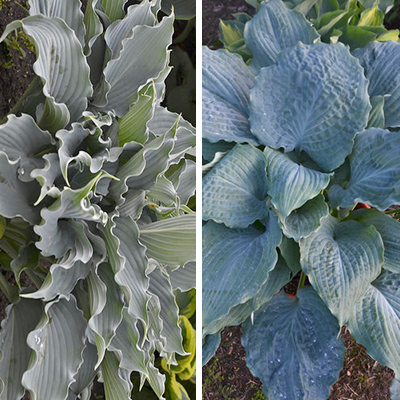 10.
10. 
